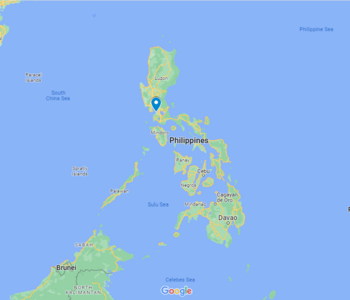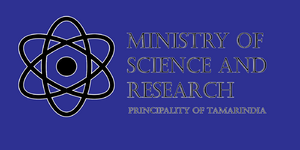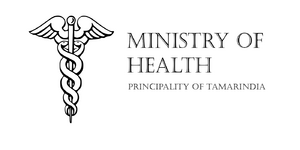Principality of Tamarindia
Principality of Tamarindia Pamunuang Prinsipe ng Tamareña (Filipino) | |
|---|---|
| Motto: Una Mens, Una Intentio (Latin) "One Mind, One Aim" | |
| Anthem: "God Save the Prince" | |
 Location of Tamarindia in the Philippines | |
| Capital | Aro |
| Largest city | Bellen |
| Official languages | Filipino English |
| Religion | Iglesia ni Cristo Roman Catholic |
| Demonym(s) | Tamarindian Tamarenaño Tamarenaña (female) |
| Government | Unitary constitutional monarchy |
• Monarch | Rowan I |
• Prime Minister | Clark Owen Palaganas |
| Legislature | Council of Three |
| Establishment | |
• Republic dissolved | 23 June 2022 |
• Principality established | 24 June 2022 |
| Area | |
• Total | 0.34 km2 (0.13 sq mi) |
| Population | |
• Census | 49 |
| GDP (PPP) | estimate |
• Total | $33,455. 21 |
| GDP (nominal) | 2021 estimate |
• Total | $23,457.23 |
• Per capita | 2,560 USD |
| Currency | Philippine peso (PHP) |
| Time zone | UTC+08:00 |
| Date format | mm/dd/yyyy |
The Principality of Tamarindia (Filipino: Pamunuang Prinsipe ng Tamareña) is a micronation located in the Calabarzon region, The southern-most part of Luzon, Philippines. The micronation was established on 24 June 2020 as a follow-up nation upon the dissolution of the Republic of Tamarindia on 23 June 2022. The follow-up nation was reinforced by a memorandum created right after the dissolution of the republic. The principality has 3 municipalities: Bellen (formerly as A.D.M. Acosta), Owen, and Aro (capital) and it is ruled by the recent president of the dissolved republic, Rowan De Aro and gets his title being the prince of Tamarindia. The nation was inactive as of July 11, 2022 due to unfixed government structure.
History
Before the dissolution of the republic, Republic of Tamarindia is a candidate for the application of membership to the Association of Micronations in the Philippine Islands (AMPI). During the interview of President Rowan De Aro by the Secretary General and Chairman of AMPI, one of the members of AMPI who is a member of Iglesia Ni Cristo warns Rowan De Aro about being a president of a micronation without the consent of government of the church (Iglesia Ni Cristo). Since the church forbids it's brethren to involve in politics, De Aro had no choice but to end the republic and come up with a new government.
Right after, Rowan De Aro began to conduct a memorandum to establish a follow-up micronation as a principality upon the dissolution of the republic, since being a monarch doesn't involve being to politics.
Just a day later, The memorandum take effect and the recent president began to make the identity of the principality such as creating its coat of arms, flag and national units/branches.
Government
The government of the Principality of Tamarindia is based on the House of Government of the Principality. On there, the Prime minister is on office. The Prime minister communicates with the Prince of Tamarindia through their personal Facebook accounts via Messenger for their cooperation.
The Prince
The Prince of Tamarindia is the head of state. He approves all draft laws becoming constitutional acts based on his personal statement. The prince is also the "admin of the constitution" meaning the prince has the rights to change the constitution of Tamarindia whenever he wants.
Prime Minister
The Prime Minister of Tamarindia is the head of government and it is chosen by the prince. The prime minister is the chairman of all the ministries inside the cabinet and co-ordinates with them about the discussion of government policies. He/she primarily decides about the decisions of the cabinet.
Ministries
The Government of Tamarindia has six ministries that the Prime Minister hold in unit:
Government agencies
-
Royal Supreme Court
-
Royal Civil Defense Force
-
Royal Constabulary
-
Bank of Tamarindia
Geography
Tamarindia is located in Nothern Tanza, Cavite and Southern Luzon. Tamarindia is surrounded by rivers, creeks, canals and coconut trees. Just 500 meters up north from Tamarindia is Manila Bay. Tamarindia is 28 kilometers away from Manila Metropolitan Area or National Capital Region (NCR).
Tamarindia is divided to 3 municipalities: Owen, Bellen and Victoria (capital)
Economy
The economy of Tamarindia primarily comes from the trades and services of Rowan's family business. Trades form 78% of the economy while the services form 22% of the economy. The trades and services make the annual gross domestic product (GDP) of Tamarindia which is ₱1.2 million or US$22,330 in average.
Trades
Trades are involved in marketing goods and products. Marketing is performed by the two variety stores owned by Rowan's family. The estimated gross of trading in Tamarindia is ₱2,700 or US$49 everyday. Annually, the estimated gross from trades is ₱985,500 or US$17,893 (currency rate as of July 2022).
Services
Services are involved mostly from the photography business of Rowan. The everyday gross from services may vary depending on the number of clients being served. The everyday gross from services may range to ₱500 – ₱1,000 (US$10 – US$20). Annually, the estimated gross from services is ₱273,750 or US$4,970 (currency rate as of July 2022).
Culture
The culture of Tamarindia is based on their religion, Iglesia Ni Cristo. This involves of blood being forbidden as food, the practice of unity and unbreakable brotherhood and saying the term "Kapatid" or "Ka." with their names to call somebody.
Public holidays
| Date | Event | Description |
|---|---|---|
| January 1 | New Year's Day | Celebration of an entry of the first day of a new year in the Gregorian calendar |
| April 10 | Prince Rowan Day | Birthday of Prince Rowan |
| May 1 | Labour Day | Commemorate all the workers around the world |
| May 10 | Felix Manalo Day | Commemorating the birthday of Felix Manalo |
| May 16 | Tamarindia-Molossia Friendship Day | Commemorate the relationship between Tamarindia and Molossia |
| May 30 | Marivic Day | Birthday of the Prince Mother |
| June 24 | Principality Day | Establishment day of the principality |
| August 8 | Duke Cesar's Day | Birthday of the Grand Duke of Tamarindia |
| September 21 | Cloma's Day | Birthday of Admiral Thomas Cloma, the father of Philippine micronationalism |
| September 26 | Founding Day | Founding day of Tamarindia |
| December 12 | Thanksgiving Day | Thanksgiving for the year's end |
| December 25 | Christmas Day | Annual holiday commemorating the birth of Jesus Christ |
| December 31 | New Year's Eve | Day of the pre-year's end |

Tamaradio
Tamarindia's radio "Tamaradio" is the only source of media in Tamarindia. It is an on-going series being the first episode released on May 31, 2022. Tamaradio currently has 4 episodes produced as of today.
Identity
Standard flag
The principality decided to keep the flag of the republic but with a different meaning. Tamarindia's flag is plain white and consists of 3 vertical lines on the left side. The white color represents loyalty and the principality itself. The gold line represents prosperity and the wealth that the nation possesses and the two silver lines represents brotherhood and faith.
Coat of arms
Tamarindia's coat of arms is a heraldry crest. It consists of the shield of Tamarindia. The shield is divided into four parts: The sun representing faith, People holding hands forming a circle representing brotherhood, Gold coins and tree representing prosperity. The shield has two lions on it's sides symbolizing loyalty. On the top of the shield is a crown symbolizing the prince reigning. and a ribbon at the bottom saying "Una Mens, Una Intentio" originally in Latin that means "One Mind, One Aim" in English.
Etymology
Origin of the name "Tamarindia"
Tamarindia gets its name from the word "Tamarind" since the land of Tamarindia is a Tamarind tree forest back in the old days. Combined with the suffix -ia which defines as "Land of the-", The name Tamarindia means "Land of the Tamarind trees" or "Land of the Tamarind forests".
Filipino demonyms
The official Filipino versions of the demonym "Tamarindian" which are Tamareñano and Tamareñana is derived from local Spanish-Filipino demonyms with the use of enye (ñ). Examples of these are: Caviteños (people from Cavite), Batangeños (people from Batangas), Davoeño (people from Davao) etc.











